-
Credits
- Story by:
- Laura Kane & Aleksandra Sagan
- Edited by:
- Sunny Freeman & Kevin Ward
- Layout & Graphics by:
- Lucas Timmons
- Produced by:
- Megan Leach

HYDERABAD, INDIA — Piakka Appalaraju steadily rows a small circular boat he uses to fish twice a week on the placid blue-green waters of Gandigudem Lake and remembers the moment last October when his livelihood suddenly evaporated.
Hundreds of thousands of fish began to wash ashore, their translucent white bodies floating to the top of an inky-black liquid. He and 50 other locals had paid for the fishing rights to the lake. Women stood weeping by the shore that day.
"It was a disaster scene. People collapsed after seeing the fish," he says, speaking through a Telugu translator.
"They were wordless. They were not in any position to express their grief. One after another, they came to the lake and they saw how the fish died."
Indian media reported that wastewater from nearby pharmaceutical companies leaked into the lake during heavy rains and the state pollution control board ordered the companies to compensate the fishermen. The board did not respond to requests for comment from The Canadian Press.
But Appalaraju maintains the money wasn't enough to cover his losses.
For the villagers who live around Hyderabad, the incident was another example of how the city's booming drug-manufacturing industry damages their lands, waters and food sources — although companies deny causing any harm and say they voluntarily agreed to compensate villagers.
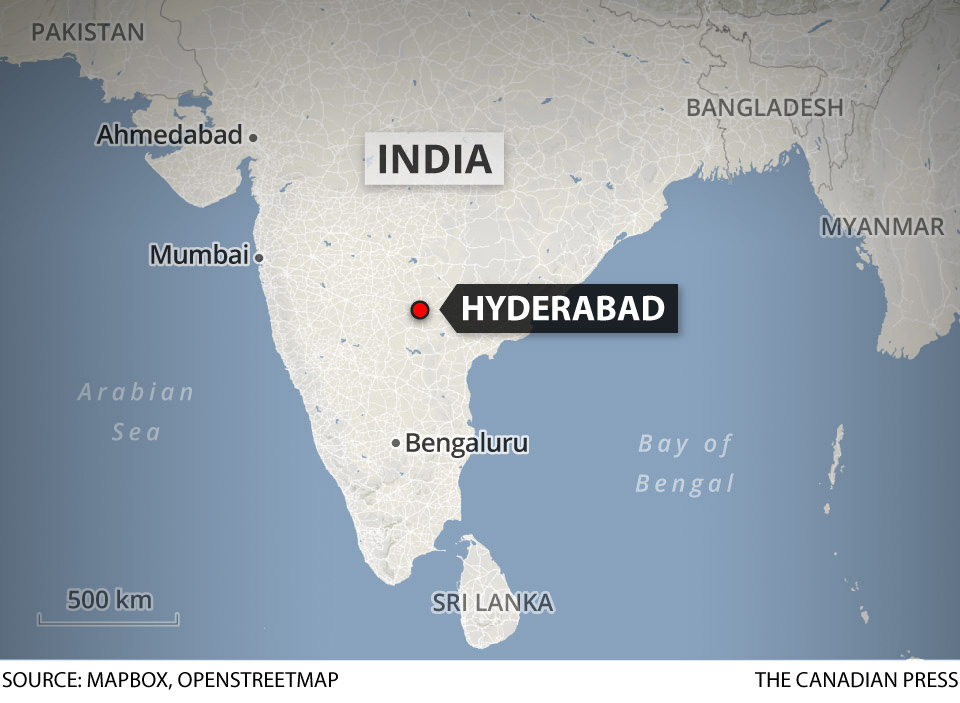
Hyderabad, the self-proclaimed "bulk drug capital of India," churns out a steady stream of generic drugs, including antimicrobials, for global consumption. Dozens of facilities hold licences to export to Canada.
The worldwide overuse of antimicrobials in humans and animals is accelerating dangerous drug resistance, killing an estimated 1.5 million people a year and pushing medical care closer to a post-antibiotic era in which common diseases are no longer curable.
But resistance also appears to be growing in the environment. Some researchers say rivers, lakes and groundwater in Hyderabad contain elevated levels of antibiotics and drug-resistant superbugs.
Pharmaceutical waste and substandard sanitation are breeding antimicrobial immunity, say experts, who contend the West's support of cheaply produced drugs makes it complicit.
About a kilometre from Gandigudem Lake, a dusty red tanker truck painted with the words "Ind. Effluent Water" and "PETL" sucks up a murky brown fluid from an open well.
Scores of drug-manufacturing facilities operate in the area, known as the Kazipally pharmaceutical cluster, and many send their wastewater to the PETL, or Patancheru Enviro Tech Ltd., treatment plant.
One of the first studies on antimicrobial waste in the region in 2007 tested the treated wastewater from PETL. At the time, the plant released treated water into a stream that connects to three major rivers in Hyderabad, according to the report by Joakim Larsson, an environmental pharmacologist at Sweden's University of Gothenburg.
Larsson found the highest levels of pharmaceuticals ever reported in any effluent, or liquid waste.
The findings piqued his interest. Many previous studies on antimicrobial waste in the environment focused on humans excreting or improperly disposing drugs. But Larsson's report suggested production facilities were releasing substantial amounts of medicines as well.
He has since published dozens of reports on the issue, including a 2014 study that found a Hyderabad lake teeming with antibiotics that contained 7,000 times more resistance genes than a Swedish lake.
The following year, he found the bacteria in the Hyderabad lake contained plasmids, which allow the microbes to transfer their resistance to one another.
"... we have opened Pandora's box and we can't turn back the clock again.”
Environmental pharmacologist Joakim Larsson
Larsson expected to find resistant bacteria in any river or lake in India that receives sewage, but was shocked to discover the presence of antibiotics at much higher levels than humans would excrete.
When bacteria meet antibiotics, they learn to resist the drugs, he says, adding his greatest concern is that pollution is spawning new superbugs.
"That is sort of an irreversible event," he says.
"That thing can happen one time on our planet, and then we have opened Pandora's box and we can't turn back the clock again."
PETL no longer dumps treated water into the stream. Now, an 18-kilometre pipeline carries the fluid to the Amberpet sewage plant, where it is again treated before being discharged into the Musi River, a major waterway that flows through the centre of Hyderabad.
Some companies that operate here and are licensed to export to Canada say they do not send any wastewater to PETL because their factories have systems that result in zero liquid discharge.
Locals who live along the Musi River say the pipeline simply shifted the pollution.
The Musi River near the village of Edulabad froths and bubbles with thick white foam. It smells of chemicals so strongly that the throat and eyes burn.
The village lost a court challenge to block the pipeline's construction more than a decade ago.
Edulabad's president Musi Shankar was bestowed with the nickname Musi in honour of his 30-year fight to protect the waterway from pollution. Stacks of photo albums, overflowing with pictures of his demonstrations and meetings with Indian politicians, fill his office. Despite his tireless efforts, he believes nothing has changed.
A government-built pipeline brings clean drinking water to the village. But polluted water feeds crops and livestock and people who work in fields suffer blisters and rashes, he says. Villagers who can afford to leave migrate in droves, he adds, while those too poor are stuck trying to eke out a meagre living on contaminated land.
"As there's no alternative, they're living here, even after knowing that it's affecting their livelihoods, affecting their health, affecting their cattle," he says through a translator.
On Peddaboina Raju's rice paddy farm in Edulabad, the water from a bore well runs yellow-green. His rice yield has dwindled and the husks are often empty. He cannot find a buyer for his barren land, but he cannot leave without the income from selling his property.
Raju wants government compensation to pay for his sons' education.
"I have not received a single rupee from the government," he says through a translator. "There is no support from outside."
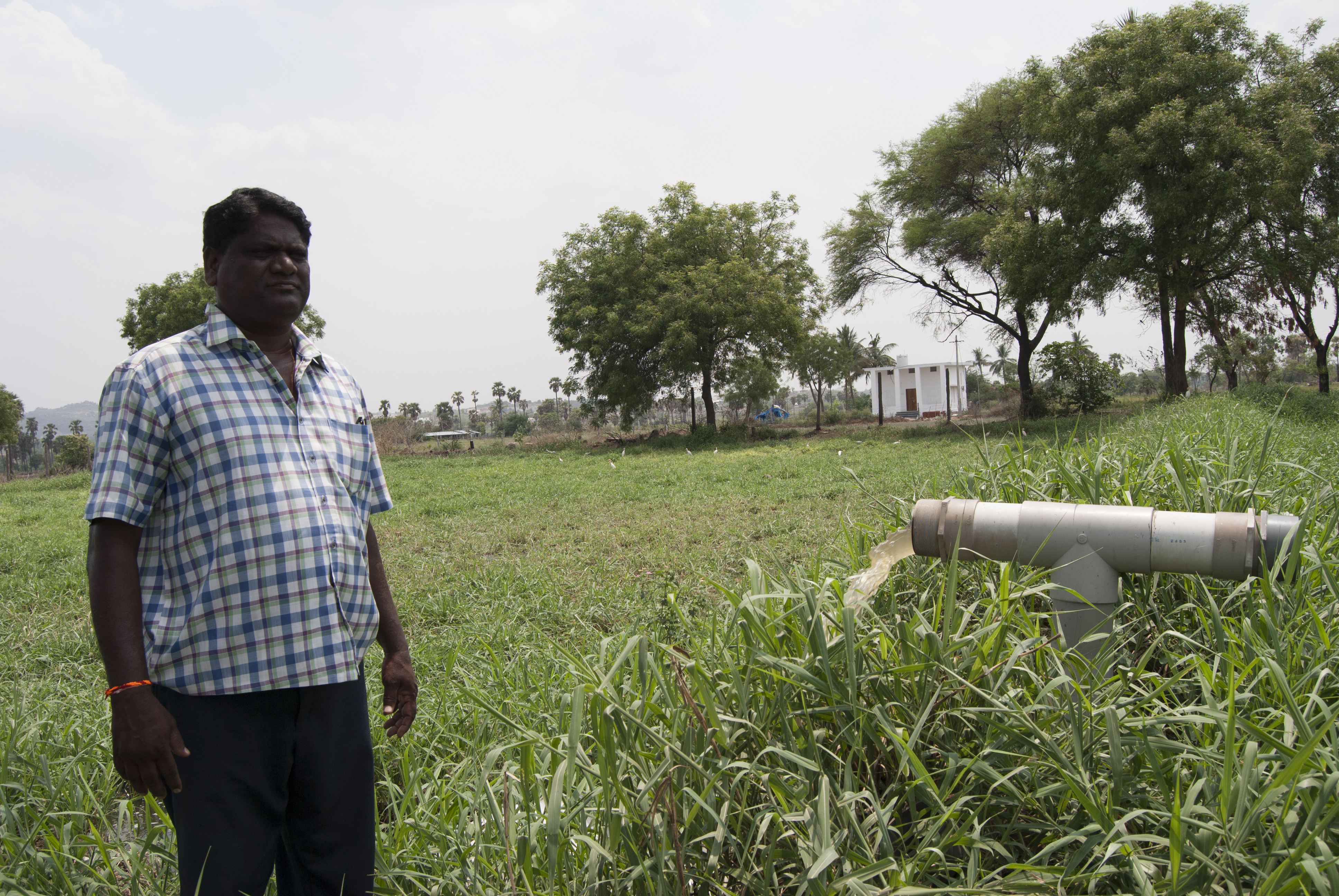
Multiple sources pollute the Musi River.
Hyderabad discharges about 600 million litres of untreated sewage into the river every day, according to a 2012 study by Pullaiah Cheepi, an economics professor at Hyderabad's Osmania University. The waterway was also described as a "dumping ground" for slaughterhouses, hospitals and the textile, dye, and oil industries in a 2005 study partially funded by the Indian government.
Researchers have also found elevated levels of antibiotics in the river. A 2016 study by two civil engineers at the Indian Institute of Technology in Hyderabad found antibiotic concentrations were 1,000 times higher than those usually found in rivers in developed countries.
The same year, a German team led by infection specialist Dr. Christoph Lubbert at Leipzig University Hospital tested water samples from an irrigation channel at Edulabad and at two points along the Musi River, as well as from other locations in Hyderabad. They found all 28 sites contained antimicrobials. A sample from the Musi River had the largest number of antimicrobial agents along with many genes that drive resistance.
Lubbert's team concluded that insufficient wastewater management by drug manufacturers led to "unprecedented" antibiotic contamination that is associated with the spread of resistant bacteria. In one spot, researchers found the highest concentration ever recorded of fluconazole, used to treat many fungal infections.
The level of fluconazole is so high that there's no explanation for it other than pharmaceutical waste, says Lubbert.
"That single particular finding is very alarming."
The Telangana State Pollution Control Board is tasked with monitoring the pharmaceutical industry. It has, at times, taken action, as it reportedly did after the fish deaths in Gandigudem Lake. But locals and advocates say the board fails to act more broadly on pharmaceutical waste.
The foam bubbling in the Musi River is the result of untreated domestic sewage, says board member secretary Sri P. Satyanarayana Reddy. The board, he adds, has never found any antibiotic residue or resistant bacteria in Hyderabad waters.
Reddy does not believe scientific studies that suggest the contrary. The mostly European scientists are biased, he says, adding he doesn't know the methodology used. (All the studies that found resistance and are cited in this story were published in peer-reviewed journals and described their methodology.)
"The whole approach seems to be highly biased with an intention to blame the Indian pharma industry."
The Bulk Drug Manufacturers Association
Reddy urged The Canadian Press to email additional questions so he could forward them to the state government. More than a month after the first of several emails was sent, no one has replied.
Industry groups also believe the research is biased. Study teams interact with non-governmental organizations, locals, news reporters and institutes, but not the industry or statutory authorities, according to the Bulk Drug Manufacturers Association, which represents Indian pharmaceutical companies.
"The whole approach seems to be highly biased with an intention to blame the Indian pharma industry," it says in a statement.
The Central Pollution Control Board has conducted a detailed inspection of PETL, the pipeline and treated effluents from the sewage treatment plant and found that "all parameters were well within the standards," the pharma association says.
The industry group also disputes the allegation that fish in Gandigudem Lake died from industrial effluents. Instead, it maintains the incident occurred because there was heavy rainfall and the drains overflowed. Sometimes, it adds, fish die due to sudden changes in water quality and osmotic pressure.
The association describes the compensation paid to fishermen as "voluntary," despite media reports that the board ordered the payment.
"As a goodwill and social responsibility, we had compensated for the loss irrespective of whether it is due to industry," its statement reads.
"Many times, it is the industry which is coming forward to help the surrounding communities as most of their livelihood is dependent on our activities, including local people having employment in our factories."
Following the negative news reports and damaging scientific studies, the association sponsored a study in partnership with the University of Hyderabad. The report found equal levels of resistant bacteria near the industry and in a lake about 50 kilometers away.
"This indicates that the (resistance) is not just because of antibiotics' residues in industrial effluents but also due to other factors like excessive prescription of antibiotics, uncontrolled use of antibiotics on animal health, poultry, usage for growth promotion and milk yields enhancement and so on," the association says.
But Swedish researcher Larsson says the study authors failed to measure antimicrobial pollution. It's no surprise that resistant bacteria can be found across India, but the key to Larsson's reports is the presence of high levels of antimicrobials, which suggest resistance is forming in response, he says.
In October, a top Indian tribunal ordered the industry to pre-treat its waste before sending it to PETL and contribute to an environmental relief fund after a decades-long legal battle. The tribunal wrote there was not enough evidence to prove that pharmaceutical pollution was causing antimicrobial resistance, although that "may" be the case.
The decision directed the state government to conduct a study of antimicrobial waste and resistance in the region. The pollution control board says the study is underway.
PETL did not respond to a request for comment. The tribunal ruled the system of transporting treated effluents from PETL to a sewage plant to be released into the Musi River does not violate hazardous waste rules.
India is Canada's third-largest supplier of antimicrobial ingredients and Canada imported at least $113 million worth of antimicrobials from the country since 2013, Statistics Canada data shows.
A Health Canada list of hundreds of facilities in India licensed to export pharmaceuticals to Canada includes at least 55 in the Hyderabad area.
However, it doesn't disclose details on which companies imported specific medicines and from which facilities because they're considered "confidential business information." The department could also not say which facilities produce antimicrobials.
Totals in C$ of Canadian antibiotic imports from India from 2013-2016. Only values of $1M+ are included.
Medicaments containing macrolide, o/t erythromycin, for human use, in dosage - Other medicaments containing antibiotics, for veterinary use, in dosage - Cephalosporin, its salts and its derivatives - Other antibiotics, for human use, in dosage - Other antibiotics, in bulk - Rifampin (rifampicin), its salts and derivatives
Source: Statistics Canada
The veil of secrecy over the pharmaceutical industry is outrageous, says Natasha Hurley of Changing Markets, a sustainability organization that has published several reports about Hyderabad pollution.
"It's crazy that you've got more idea of where a T-shirt you're wearing has come from than where a drug that you're putting into your mouth has come from."
The top four Canadian importers of finished antibiotics from India in 2016 were Sandoz Canada Inc., Celgene Corp., Ranbaxy Pharmaceuticals Canada Inc. and Auro Pharma Inc., the Canadian arm of Aurobindo Pharma Ltd., which has a wide presence in Hyderabad. Those basic details are provided on the Canadian Importers Database, a website maintained by Innovation Canada.
Sandoz says it imports one antifungal and one antiviral, but no antibiotics, from its Novartis plant in Kalwe, India, and the database incorrectly categorized the imports. It adds all its sites comply with rigorous quality and ethics standards. Sun Pharmaceutical Industries Ltd., which operates Ranbaxy, says all its products comply with internationally accepted good practices. Celgene says the database is inaccurate and it does not import antibiotics.
"It's crazy that you've got more idea of where a T-shirt you're wearing has come from than where a drug that you're putting into your mouth has come from."
Changing Markets spokeswoman Natasha Hurley
Aurobindo says all its facilities in Hyderabad either have zero liquid discharge or send their effluent to PETL, which treats wastewater to the standards prescribed by regulatory agencies.
The Canadian Press contacted a dozen pharmaceutical companies with facilities in Hyderabad that are licensed to export to Canada, but only six responded. Mylan N.V., MSN Laboratories Private Ltd., SMS Pharmaceuticals Ltd. and Biocon Ltd. also maintain their factories do not pollute.
Canada rarely inspects foreign drug manufacturing facilities and instead relies on inspections by partners from the U.S. or Europe. The inspections are conducted under international Good Manufacturing Practices, which do not explicitly address wastewater treatment.
India and China now manufacture the vast majority of the world's drugs. Manufacturing costs in India are at least 30 to 40 per cent lower than those in the United States and western Europe, and labour costs are just one-seventh of those, according to a recent Changing Markets report.
The report acknowledges the groundbreaking role India played in making affordable medicines widely accessible, but warns inexpensive production comes at a cost to local people and the environment.
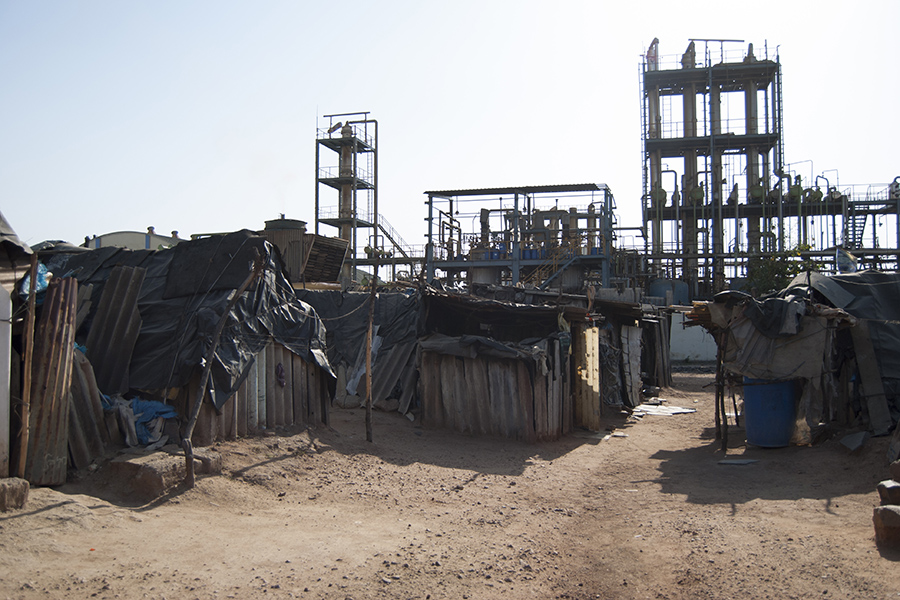
Outside the factories in the Kazipally pharmaceutical cluster, makeshift corrugated tin shacks covered with plastic tarps line an empty dirt lot.
Moulali Mohammed, 22, moved to the shack community when he was four years old. His parents moved from another state to work in the factories. Now he supports his wife and infant son with a job in the safety unit at Virchow Laboratories Ltd.
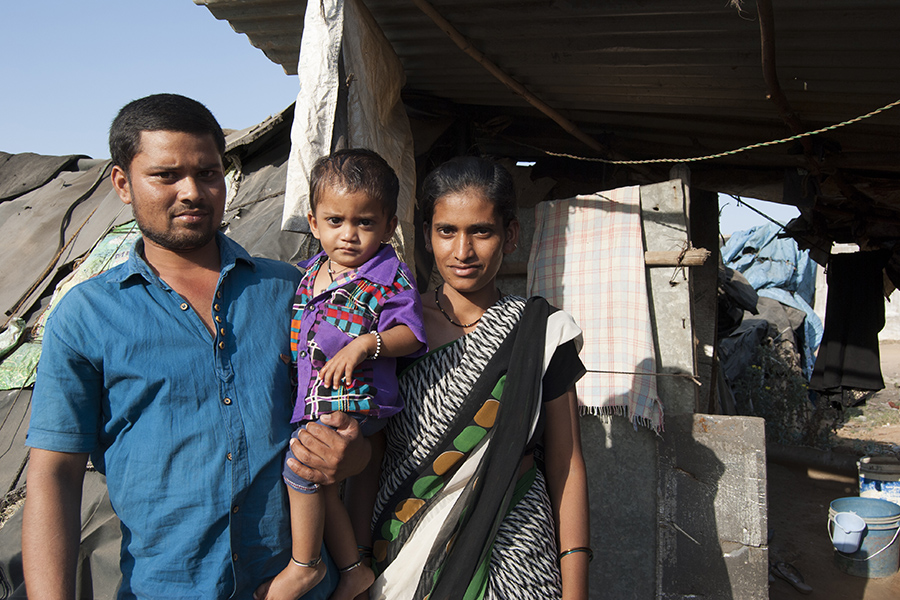
The city's groundwater has been polluted for as long as he can remember and like others in Hyderabad, he must buy water from a nearby village or from a private company that sends a truck to the area once a week.
Another worker, Tejaswani Karnike, says she makes about C$115 a month cleaning for Mylan if she works 30 eight-hour shifts.
She and her husband left their children to attend school in their home state while the couple tries to earn enough money in Hyderabad to pay for their education.
"We don't get the work there. We can't bring them here. What else we can do? It is difficult for us," she says through a translator.
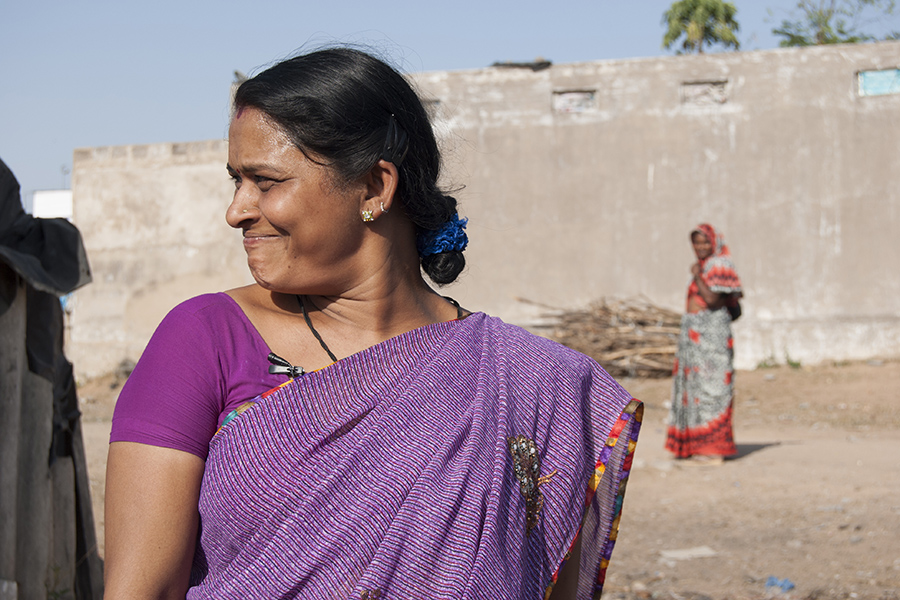
Virchow, which is licensed to export to Canada, did not respond to requests for comment. Mylan says its housekeepers are paid more than the minimum wage. The Bulk Drug Manufacturers Association denies that pharmaceutical workers live in the shack communities, saying the occupants work in construction.
Sanitation issues also majorly contribute to drug resistance in India, as evidenced by the millions of litres of sewage flowing into the Musi River.
Roughly half of India's 1.3 billion people lack access to functioning toilets, so open defecation occurs, and even areas with toilets often do not have adequate sewage treatment. Pharmacies sell antibiotics over the counter without a prescription, which leads to people excreting or throwing out drugs at a high rate.
The problem has become so dire that even the holy Ganges River, where Hindu pilgrims flock to bathe, pray and cremate their loved ones, is profoundly polluted.
New Delhi metallo-beta-lactamase, a dangerous resistance enzyme known as NDM, was found in a 2014 study to be over 20 times greater in the Ganges River during pilgrimage season than at other times of the year, indicating that pilgrimage areas may be hot spots for the transmission of antibiotic resistance.
Indian Prime Minister Narendra Modi launched a sweeping initiative called Swachh Bharat, or Clean India. It aims to build more toilets in rural areas, a move that is lauded even by those who are otherwise critical of the government's response to antimicrobial resistance.
In the village of Kistaipally, a stone's throw from the Kazipally pharmaceutical cluster, Puligilla Prakash walks through his once-abundant sugarcane, rice paddy and corn fields. Puligilla, who states his surname first like many in southern India, was village president in the 1980s when it granted permission to the companies to set up around the community.
He soon came to regret that decision, but can not reverse it.
His agricultural land became barren and the groundwater, rivers and lakes profoundly polluted. His parents farmed this land before him, and he recalls the once-bountiful crops.
"The big industries ... they only cause this fate."
Puligilla's daughter, Suvarna, a 28-year-old doctor, remembers when she and other children in the village would swim in the water and drink from the bore wells. Now she gets nervous about her sister's child playing outdoors at all, and she doesn't wash her clothes in the water.
Suvarna is reluctant to leave Kistaipally, even though she's educated and has the means and opportunity to move. She doesn't believe she can make a "beautiful living" in the village, which has lost the lush greenery of her youth, but she dreams of helping restore it to its prior splendour.
"This is my home," she says.
"This is my birthplace. I really want it to change. And I want to see the good olden days come back."